“Alliance at Crossroads”
| Date: | Tuesday, February 24, 2015, 13:30-15:30 |
|---|---|
| Venue: | Iwasaki Koyata Memorial Hall, International House of Japan |
| Moderator: | Kiichi Fujiwara (University of Tokyo) |
| Speakers: | Chung Min Lee (Yonsei University) Sheila Smith (Council on Foreign Relations) Yuichi Hosoya (Keio University) Akio Takahara(University of Tokyo) Lully Miura (JSPS Fellow) |
| Open to All: | Registration |
| Language: | English/Japanese simultaneous translation |
| Organized by: | Security Studies Unit, Policy Alternatives Research Institute, The University of Tokyo In cooperation with the International House of Japan |
| Co-organized by: | Japan-US Alliance Agenda Network |
※ This workshop was organized by subsidies both from the Ministry of Foreign Affairs and Center for Global Partnership, Japan Foundation.
-
Movie : 1:33:25 / Audio : 1:37:39 (EN) 1:37:34 (JP)
Workshop on the Future of Alliance
The Security Studies Unit of the Policy Alternatives Research Institute hosted on February 23-24, 2015, a workshop for the study of the character and role of international alliances, with particular focus of the Japan-US alliance and its impact on the security architecture of East Asia. The workshop was made possible by the co-hosting effort of the International House of Japan, where the event took place, and by the support of both Japan’s Ministry of Foreign Affairs, and the Center for Global Partnership, the Japan Foundation.
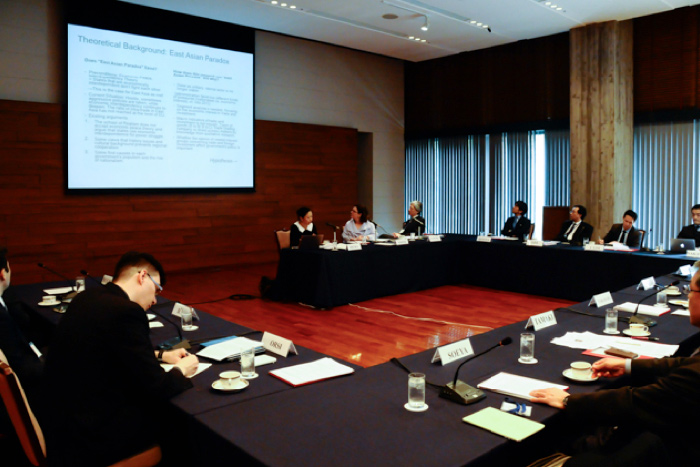
Photo: Izawa Hiroyuki
Day 1
The event was opened by SSU Director Professor Kiichi Fujiwara, who briefly introduced the topic and the structure of the workshop. Professor Fujiwara recalled how the topic of alliances in Japan is often referred to and discussed in a polarised way between the two radical options of either terminating the alliance with the US, or on the contrary expanding it into a collective defence pact. Both scenarios however convey a relatively limited picture not only of the available options within the existing legal-constitutional framework, but of the scope and impact of the Japan-US alliance outside the boundaries of a domestic debate. In particular, he remarked how the system of military alliances developed by the US in East Asia after WWII is structurally different from the one in Europe, as the latter is based on the multilateral framework of NATO as an international organisation, while the former relies on bilateral treaties without deep formal coordination at multilateral and technical levels. In East Asia, the international political scene has been rapidly changing reflecting primarily a power change or “shift”, whereby China has surged to a major regional and even global centre of industrial and trade activities, with a considerable increase in its military capability, which has been producing a number of important consequences for all powers in the region, including of course Japan, and for the US, its regional presence and security role.
Session 1: Alliance and Regional Order
The first session, entitle Alliance and Regional Order, was chaired by Professor Fujiwara, who immediately introduced the speakers, namely T.J. Pempel, Jack M. Forcey Professor at the Department of Political Science, University of California/Berkeley, and Yoshihide Soeya, Professor of International Relations at the Faculty of Law, Keio University.
This session provided an overview of the alliance issue from various perspectives, particularly focusing on the historical evolutions of alliances in East Asia, in a rapidly changing context.
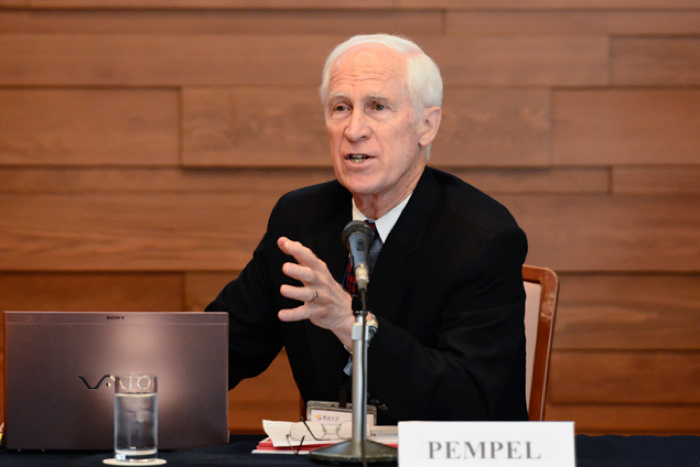
Professor Pempel opened his talk by recalling how the current international order in East Asia can be understood as a residue of strategic calculations made during the Cold War, where the US dominates with bilateral commitments to a number of countries in the region. Despite the presence of important regional institutions such as the ASEAN Regional Forum or the Shangri-La Dialogue, these do not possess the character of, and play little role on, existing alliances. From a US perspective, Washington is committed to the continuation, and possibly expansion, of the existing alliance network, even in the presence of military threats. This can be explained in two complementary ways. One reason is strategic: the US intends to be able to intervene in security crisis threatening its interests anywhere, and the presence of allies and/or the deployment of troops outside the US enables a longer strategic reach. Another is bureaucratic, as shrinking the number of available posts for military officers diminishes the overall chances of promotion.
Under the Obama administration, the US has sought to complement the classical “hub and spoke” approach to alliances in East Asia with a direct engagement to multilateral institutions, and the enhancement of formal economic ties. Overall therefore, it must be noted that US commitments towards its allies and partners are expanding, not contracting. Professor Pempel identified a number of factors which are complicating US alliances in the region, such as the possible relocation of bases, the difficulty in coordinating Asian allies because of animosity among them, the perennial fears of entrapment and abandonment, possible domestic opposition to the alliance. He also discussed the impact on alliances of China’s emergence as major economy, highlighting though how China is still far from representing a threat to US economic and military hegemony. Nevertheless, even the current military capabilities of China, particularly with regard to anti-ship missiles, should not be underestimated. The US is implementing a strategy of hedging against such security risks, although by doing that it also encounters difficulties arising from the possible fear of entrapment and abandonment. This has to be framed within the broader picture of intra-state rivalries in the region, whereby different actors, even allies, have different interpretations of key issues and conflicts, and of the role of the US. Finally, Professor Pempel focused on the economic sphere and its importance as a leverage in diplomatic relations and negotiations, alongside with military capabilities and strategic posture. He has highlighted the importance for Japan and the US to show an improved economic outlook which may compete with China’s economic ascendance for prestige and influence in the region.
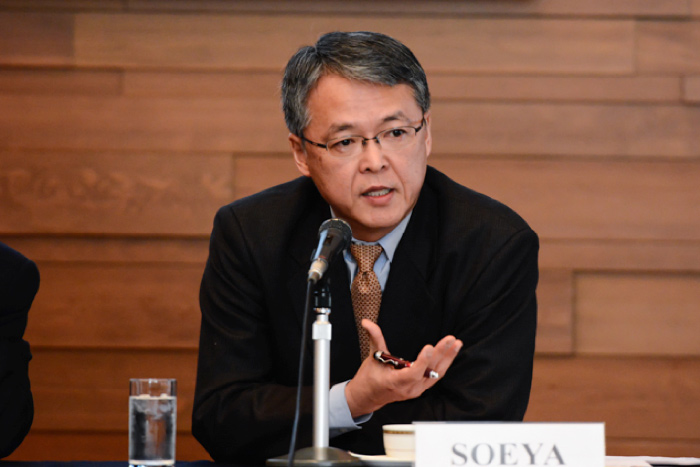
Professor Soeya discussed in his intervention the probable trajectory of the Japan-US alliance in a context of power shift within the East Asian region. The nature of the alliance is likely to change by adapting to a mutable environment, characterised by a substantially more prominent role of China. Even if China is probably not going to pose a challenge to US strategic hegemony, certainly at global level, Beijing seems however inclined to achieve a central position in this part of the world, without necessarily triggering a confrontation with Washington. How should middle powers behave in such scenario? Professor Soeya highlighted that rather often the position and role of middle powers in the region is insufficiently explored by policy-makers, and sometimes scholars as well. Instead, it would be important to device some “middle power” strategy to cope with China’s rise. On this point, it appears that such strategy cannot be constructed by any single country (including Japan), but it needs to emerge from the coordination of the various powers in a truly equal partnership and with the consolidation of an infrastructure of regional integration. It is however also important to understand, Professor Soeya stressed, that such a strategy is not meant to antagonise China, but it should be regarded as an effort for the preservation of Asian nations in a power shift context. Within this picture the role of the alliance with the US can be seen as the foundation upon which a strategy is built in order to peacefully co-exist with a strong China.
On a slightly different note, Professor Soeya has recalled how the Japan-US alliance has strengthened in the past two decades, but it has also become the centre of a complex debate, which arose first after the end of the Cold War, about the possibility of changing the Constitution in a way to allow the deployment of JSDF (Japan’s Self-Defence Force) first in international humanitarian interventions, as initially argued by the internationalist agenda, but also, as more recently advocated by the nationalist movements, for a more active role in security and collective defence. Despite some uncomfortable aspects of the agenda advocating for a revision of the Constitution, Professor Soeya concluded that collective defence would be an important tool to strengthen the alliance with the US, which would make Japan a much closer ally of the United States, paving the way towards the full “normalisation” of the country as a full-fledged middle power.
Session 2: How Alliance is Perceived
The session was centred on the topic of mutual perceptions among states in East Asia. The Japan-US alliance is not only important for the two countries directly involved in it, but has numerous implications for all major and minor regional players. Professor Akio Takahara from the University of Tokyo (and member of the SSU) chaired the session, which saw the participation of Dingli Shen, Professor and Deputy Dean at the Institute of International Studies, Fudan University, and of Chung Min Lee, Professor at the Graduate School of International Studies, Yonsei University (Seoul).
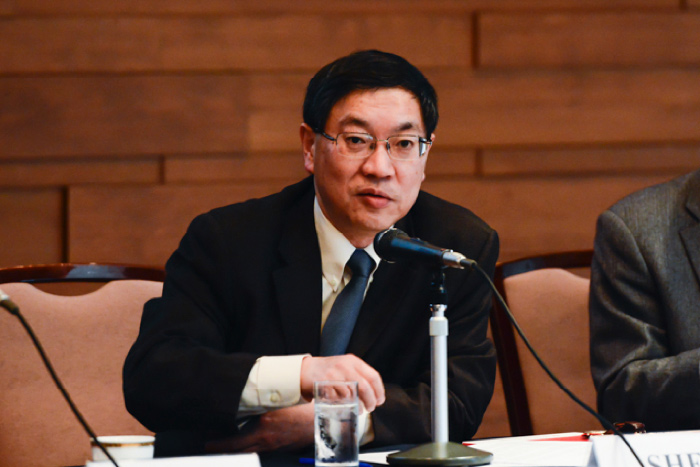
Professor Shen opened his intervention by recalling that the value of military alliances lies in the fact that a combined military force is more powerful than the one of a single nation, and this is particularly true in the case of an alliance with the US. On a more political side of the question, alliances may entail some unclear areas of commitment and action. Even if conceived for defensive purposes, alliances may be used for other kinds of operations, simply by broadening the semantic of the term “defensive”, as it is possible to see in the US occupation of Iraq after 2003, to which a number of allies participated. This unclarity about the declared defensive nature of alliances, even in East Asia, makes China sometimes suspicious about the possible objectives of the US-Japan and US-ROK alliances, particularly concerning the question of Taiwan, the US assurance about their defence guarantee extending to the Senkaku/Diaoyu, which Beijing consider to be a disputed territory, and the US military presence in Korea, if that were to be used in crises taking place outside the Korean peninsula, most notably (again) in the Taiwan issue.
In general, China has no opposition to the existence of alliances in East Asia, having used such tool in the past, as China became an ally of the Soviet Union after 1950. However, the current Chinese leadership does not prioritised the establishment of alliances, as it is instead focusing on the achievement of friendly partnerships, without any formal implications, particularly of military nature.
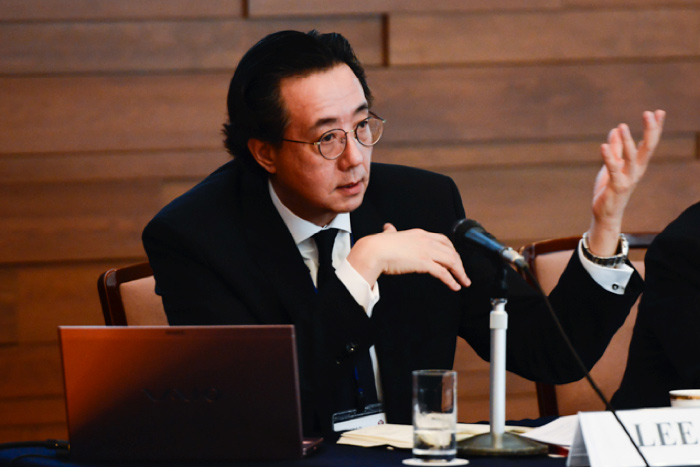
Professor Lee provided the Korean perspective on the role of alliances in the region, reflecting primarily on the experience of the US-ROK relations. Such alliance has become one of the cornerstones of Asia’s security architecture. Despite the persistence of the DPRK threat as a constant factor in the ROK security risk assessment, the alliance has evolved over the past decades. Firstly, economic development and democratisation in the ROK has allowed a more dynamic role to be played by Seoul in its interaction with the US. Secondly, the nature of the DPRK threat has shifted increasingly to asymmetric measures, such as the development of WMDs and cyber-attacks. Thirdly, the democratisation of ROK political life has meant that the politics of the alliance has become a matter of public discussion, with a large role played by public sentiment.
On this last point, Professor Lee showed the results of a survey displaying the perceptions hold by ROK citizens with regard to foreign countries. Such data display the existence of a strong support for the alliance. However, there is also uncertainty about the more distant future. While most Koreans think that the US still possesses an edge vis--vis China in economic and military terms, in the long run this may be substantially reduced. The alliance will have to find a way to respond to China’s growing military footprints in the region. Finally, Professor Lee has highlighted the persistence of a problematic relation between Korea and Japan. Despite the convergence of interest on a number of crucially important issues, particularly the coordination of a strategy towards China and the DPRK threat, the on-going Seoul-Tokyo impasse, largely due to historical legacies, remains a major stumbling block in enhancing ROK-US-Japan security ties.
Session 3: Alliance and Escalation
The third session, the last one of the first day, was dedicated to the issue of escalation as possible outcome of deterrence failure, and therefore on ways to keep security deterrence credible and working in a changing environment. The session was chaired by Keisuke Iida, Professor at the University of Tokyo and member of the Security Studies Unit, and saw the participation of Christopher Hughes, Professor at the Department of Politics and International Studies, Warwick University, and of Professor Kiichi Fujiwara.

Professor Hughes opened his intervention by reminding that escalation can take place as a “vertical” development of events, namely through their intensification, or “horizontal” escalation, when therefore a crisis spreads geographically by involving more countries. He then proceeded to assess the dangers of escalation possibly entailed by the Japan-US alliance by looking at the historical record of how alliances have impacted conflict escalation in the past. Professor Hughes noticed that in the East Asian region one does not find numerous examples of horizontal escalation, as conflicts tend to remain contained within specific areas. This may be due to the sheer geographical dimension of the continent, and the material difficulty in projecting power, but also to the role played by the US. A limited escalation was nevertheless visible during the Vietnam war, when the US tried to gain the assistance of several allies in the region, and an expanded logistical commitment from Japan. Even in this case, however, the idea was one of limited overlap between US military activities and the security of Japan, leading to a limited escalation possibility. Professor Hughes remarked that this can be explained by 1) referring to the very nature of the US hegemonic dominance, which has the ability to control escalation, and 2) recalling the existence of an understanding between the US and the USSR about the risks of escalation. Both factors decisively contributed to the containment of escalation. While the US never intended to involve Japan in a military commitment, the Japanese leadership, building on art. 9, put in place numerous limitation to the deployment of the JSDF. Fears of entrapment were therefore prevalent at that time, and this ensured that the alliance had limited potential for escalation. However, the situation has changed in recent years. This happened as US global and regional hegemony appears no longer to be in total control of the escalation ladder, and because of a perceived US decline. On the other hand, escalation risks may also be higher than during the Cold War when considering that the US and China may not possess the same mutual understanding of escalation dangers. In this context, the role of alliances should be expanded, with US allies playing a significantly more active role in ensuring regional security, something which has started to become visible even in Japan with the successive reform of the SDF. Beyond the question of material capabilities, the political perception of the alliance among Japanese elites has also changed. The new regional environment and the somehow diminished hegemony of the US have generated a fear of abandonment, which in turn prompts more emphasis on seamless cooperation on global and regional contingencies. Consequently, the Japanese political leadership is removing numerous “firewalls” previously built in order to prevent or limit Japanese international involvement. Finally, Professor Hughes underscored how the prospects of horizontal escalation have increased with the strengthening of a perceived link between maritime tensions in the South China Sea and in the East China Sea. All these elements point to the enhanced probabilities of escalation if compared with the Cold War era.
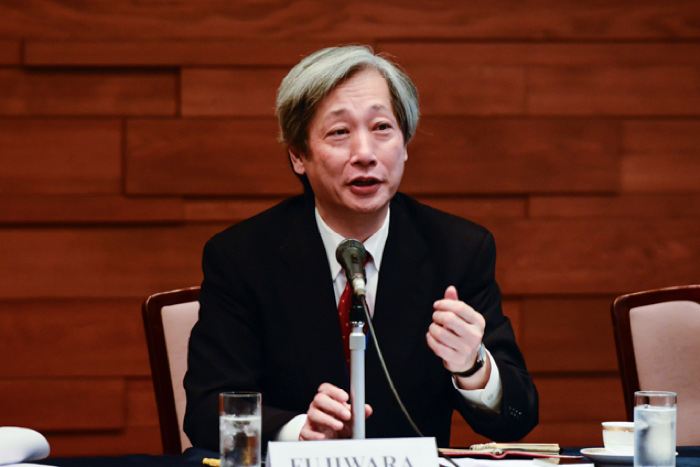
Professor Fujiwara started his intervention by recalling how, when the question of “escalation” is usually discussed in Japan, the main question has been whether the Japan-US alliance may be likely to drag Japan into a global war. However, this question represents only a partial view on a much more complex problem. While he does not think that escalation of crises is inevitable, Professor Fujiwara has expressed his concern for the successive episodes of international tensions surrounding the Senkaku islands. On this point, he recalled how many international politics experts have recurrently articulated the opinion that the Senkaku question is not exceedingly dangerous, however, some risks of escalation persist. Those risks should be framed within this context: there is no sign or evidence that either Tokyo or Beijing are planning a major war. But it may become extremely difficult to back off if some more serious incident occurs, and that would lead to escalation.
Besides, the risks of escalations may not necessarily be coming from major international actors, but also from miscalculations operated by minor powers. Professor Fujiwara recalled here the thesis advanced by Christopher Clark in his book Sleepwalkers: How Europe Went to War in 1914 (2014), which stressed the role of Serbia in triggering the Great War. If applied to the Asian region of today, this thesis may highlight the risks coming from small powers, which may wrongly estimate their own actual power and the probable outcome of escalating an international crisis. Such risks cannot be underestimated, but they appear to be presently outside the scope of most scholars and policy makers’ preoccupations.
DAY 2
The second day of the event saw a closed session in the morning, and a public session in the afternoon.
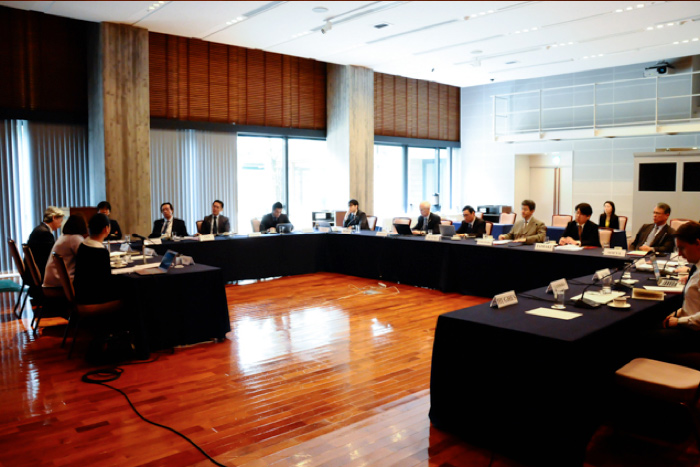
Session 4: Alliance and Domestic Politics
The fourth session of the workshop was centred on the study of the role played by domestic politics in the management of alliances, with particular emphasis dedicated to the mutual perceptions among constituencies. The session was chaired by Professor Kiichi Fujiwara, with the participation as panelists of Dr. Sheila Smith, Senior Fellow of the Council on Foreign Relations (Washington DC), and Dr. Lully Miura, JSPS Postdoctoral Research Fellow at the University of Tokyo, and member of the Security Studies Unit.
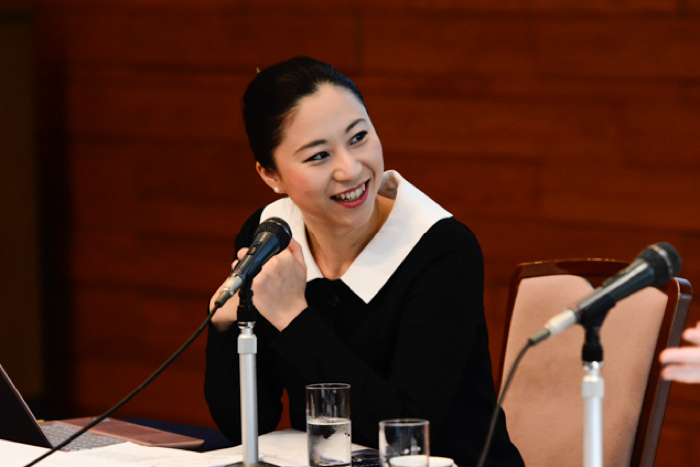
Dr. Miura’s contribution consisted in the illustration of a complex research project she has recently accomplished. This project is aimed at the study of the reciprocal perceptions of neighbouring nations and of the US by the Japanese, Chinese, and Korean publics respectively. From a theoretical perspective, the study consists in the investigation of the “Asian paradox”, namely a situation whereby, as in today’s East Asia, the strongest economic relations of dependence occur among countries whose diplomatic and military relations show frictions and tensions to a varied degree. The study was conducted by means of a survey taking place in Japan, China, and Korea, with a population sampling reflecting the general population of the respective countries. After presenting the detail of the survey data, Dr. Miura illustrated the main findings. The research has confirmed the persistence of diffuse public mistrust between China and Japan, and Korea and Japan. However, it has highlighted how perceptions are significantly more positive among the best educated, those with higher income and/or with expectation of a future income increase, those who have acquaintances and/or friends living overseas, and those who are fluent in a foreign language. Dr. Miura has finally expressed the conviction that reflecting on such factors can help the design and implementation of policies aimed at the improvement of mutual trust, with particular regard to the improvement of Japan’s image in neighbouring countries.
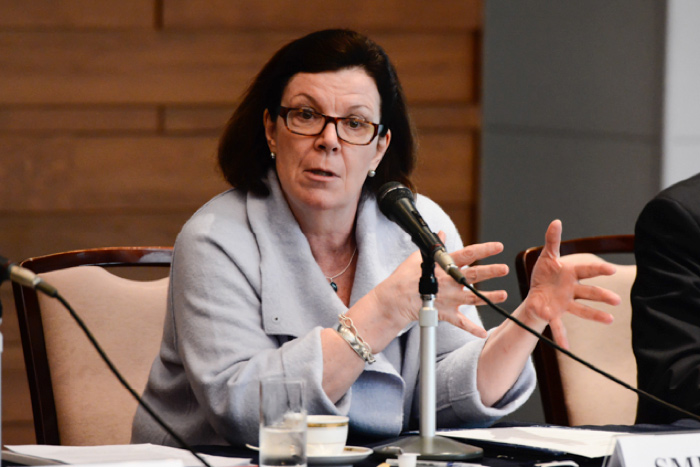
Dr. Smith illustrated in her intervention her latest book, entitled Intimate Rivals: Japanese Domestic Politics and A Rising China (2015), whose topic refer precisely to the way in which international policies are influenced by domestic political developments. The book, which is the result of several years of research, focuses on the study of how many questions of Japanese international politics have become more difficult to manage in the past few decades. This is particularly true for the management of Japan’s relations with China. Dr. Smith argued that the Japanese leadership has long started to adjust to a new regional power distribution, where China has a more prominent role than during the Cold War era. This new approach started to emerge already in the 1990s. Contrary to what it may be expected, the Japanese attitude towards China in many aspects of public policy and in several fields is not presupposed on suspicion and/or hostility. More in general, Dr. Smith argued that there is no sign of a re-organisation of Japanese politics towards the creation of an anti-Chinese front. On the contrary, Japanese elites are simply adjusting to a situation which contains both challenges and opportunities. Because of the very numerous economic and institutional interactions between the two countries, it would be incorrect to study the way in which the Japanese are adjusting by looking exclusively at the diplomatic side. Therefore, Dr. Smith’s book explores how industries and business groups are shaping Japan-China relations, with numerous lobbies pressuring the governments to adopt strategic visions for the protection of Japanese interests, and often lamenting the government’s somehow disconnected attitude. Finally, it addresses the Senkaku Islands’ question as one which is having a significant impact on the Japan-US alliance, by transforming its perception and possibly its functioning. In sum, Dr. Smith’s research intends to cast some light on an often neglected aspect of Japan-China relations, especially highlighting the non-official channels of industrial and business sectors, where a gradual adjustment to a new regional order has already begun.
Public Forum: Alliance At Crossroads
The final part of the workshop consisted in a public event, which took place in the format of a panel discussion among Professor Chug Min Lee (Yonsei University, Seoul), Dr. Sheila Smith (Senior Fellow, Council on Foreign Relations, Washington DC), Professor Yuichi Hosoya (Keio University), Professor Akio Takahara (University of Tokyo) and Dr. Lully Miura (JSPS Fellow at the University of Tokyo), chaired by SSU Director Professor Kiichi Fujiwara.
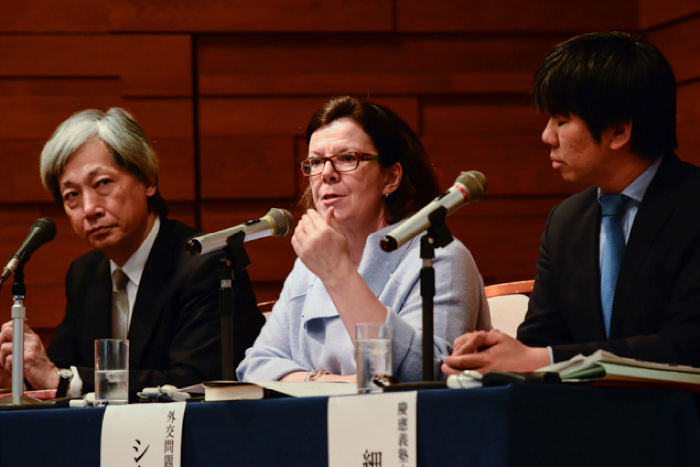
Professor Fujiwara welcomed the participants and attendees, expressing his gratitude to the co-organiser of the event, the International House of Japan, to the Ministry of Foreign Affairs of Japan and the Center for Global Partnership, the Japan Foundation, for their financial support. He introduced the speakers, and proceeded with a brief illustration of the theme. In Japan, the topic of “alliance” is almost immediately refers to the complex relation with the US, caught between the extremes of fear of entrapment and fear of abandonment. This also partially descends from the nature of alliances in East Asia, which are bilateral, as opposed to the multilateral alliance system of NATO in Europe. However, the alliance is changing also with regard to different aspects. For long time after the end of WWII and the establishment of the Japan-US alliance, very few people regarded China as a possible, real threat. But in recent decades, because of China’s economic development and consequent expansion of military capabilities, the situation has changed. How is the alliance going to respond to this relatively new situation? This is in essence the question that Professor Fujiwara asked to the panelists.
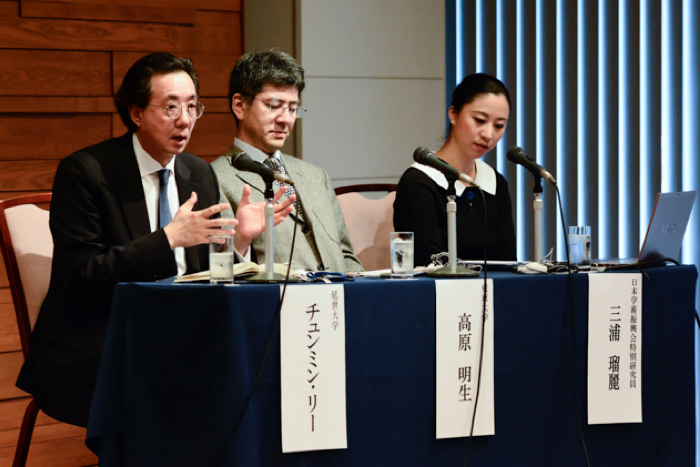
Professor Chung Min Lee was the first invited to speak. He stressed the persistent importance of alliances in the East Asian regional order, as no single actor is currently able to guarantee security, particularly in the present era of multiple parallel global and regional crises. The various alliances between Asian nations and the US have shown that a liberal democratic order can be establish in the part of the word, with great success. In general, those alliances tend to protect such achievement amid relatively precarious conditions, until the day in which a real peace can be achieved. This is subordinated, in Professor Lee’s view, to the democratisation of China. The ROK-US alliance appears to be very solid but Asian nations have so far failed to act together, as tensions persist among them, as clearly in the case of Japan-Korea relations. While this appears to be largely due to the question of historical legacies, Professor Lee expressed the hope that Prime Minister Abe will make good use of this year’s seventieth anniversary of the end of WWII by delivering a message of atonement and reconciliation.
Professor Smith introduced to the audience her latest book Intimate Rivals: Japanese Domestic Politics and A Rising China (2015), in which she describes the ways in which Japan has already initiated a process of adjustment to a new regional order characterised by a larger role played by China in economic and military terms. This does not mean that the Japanese are organising themselves in anti-Chinese terms, or that they are bringing their country on a collision route with Beijing. On the contrary, the way with which Japan is dealing with China is pragmatic and careful in exploiting the potential cooperation and mutual advantage. This is particularly visible in industrial and business relations, which are often neglected by international politics experts, who constantly privilege the diplomatic dimension. Finally, Dr. Smith has remarked that the new role of China in East Asian affairs is also changing the Japan-US relation and the meaning of the alliance. Finally, she reiterated the point made by the previous speakers about the opportunity of launching a message of reconciliation in the occasion of the seventieth anniversary of WWII end.
Dr. Miura presented the results of a research project she has recently accomplished. The project is focused on the study of reciprocal perceptions among the public between Japan, China, and Korea, with the inclusion of numerous variables for the identification of socio-economic factors which may influence the emergence and shaping of a certain opinion of the neighbouring nations. The research was conducted by means of an online survey in the three chosen countries, using scientific methodologies of population sampling, ensuring its representativeness. The final results confirm the persistence of mistrust between Asian nations, but they also illustrate how a more positive perception of the neighbouring country is often shared by those with a higher education background, those who are fluent in a foreign language, those who are optimistic about their own economic prospects, and those who have relatives and/or acquaintances abroad. Finally, Dr. Miura has suggested that such results and possibly further research in this direction should be taken in consideration for the design of a foreign policy aimed at enhancing Japan’s image in the region.
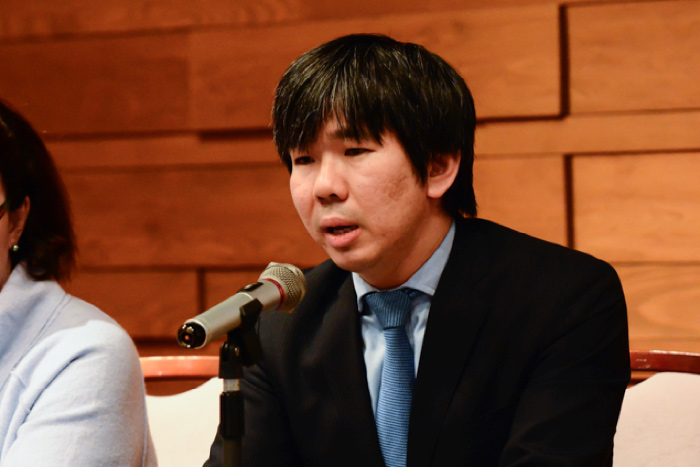
Professor Hosoya opened his intervention by illustrating the nature of his research work on diplomacy. He argued that, from a diplomatic perspective, the Japan-US alliance and more in general the diplomatic situation in the region has undergone numerous changes, also partially in response to the various crises which have characterised the last few years. During the DPJ administration, Obama came to power in the US, giving the impression of looking for a privileged relation with China. At the same time, Prime Minister Hatoyama seemed to be inclined towards the prioritisation of China, even envisaging some sort the East Asian regionalism, which did not include a role for the US. The combination of these two factors resulted in reinforcing the idea in the US that China is the privileged interlocutor in this part of the world. With the Abe administration, a sort of re-balancing has been set in motion, as the current administration is seeking closer ties with the US, even if occasional disagreements persists, especially regarding historical issues.

Professor Takahara has illustrated with appears to be the prevalent current orientation in contemporary China on the topic of alliance. China has been historically an ally of the Soviet Union after the Maoist revolution, with the signing of the Sino-Soviet Treaty in 1950. However, such an experience with alliances has left a largely problematic historical legacy, as the pact with the USSR entered an irreversible crisis from the second half of the 1950s. Today, China does not actively seek alliances in the traditional sense, but privileges the attainment of partnerships and an overall good relations with the most important international actors. While there is a widespread perception that Russia may have the potential to become one day China’s ally, it is questionable to what extent the Chinese leadership may be willing to tie themselves formally to a Moscow-Beijing alliance system, not to mention the existence of divergences and areas of geopolitical competition between the two powers.
